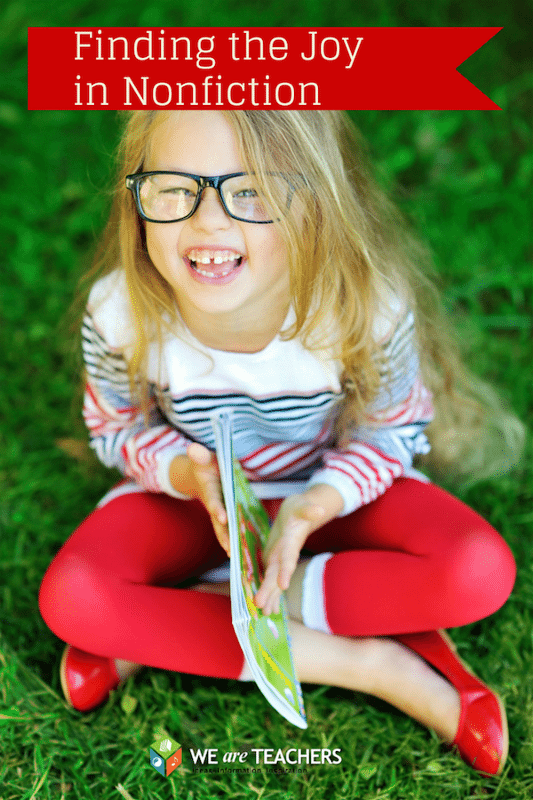This article is the third in our blog series Close Reading Isn’t Just for Novels: Teaching Students to Read Nonfiction. Click here to read all of the posts in the series. Thanks to our series sponsor, Renaissance Learning.
With the rush to increase rigor, prep for assessments and teach the standards, a lot of the joy has been sucked out of teaching reading, especially teaching nonfiction. If you’re feeling down about yet another textbook passage, it’s important to remember that many kids fall in love with reading through nonfiction. There’s the student who’s read every book in your classroom library about space. The student who sneaks time to read magazines about animals. And the student who’s never without the dog-eared Star Wars reference guide.
Here are eight ways to grow students’ love of nonfiction reading in independent and shared reading.
1. Use Complex Texts
The more complex texts are often the more interesting ones. Work with a rich, deep nonfiction book like The Great Fire by Jim Murphy, which addresses the 1871 Chicago fire and its aftermath, and students will dig into the story and the impact. When students are working with higher-order questions (“What impact did the Great Fire have on modern architecture?” “How did the Great Fire change how we plan cities?”), what it means to read nonfiction takes on new meaning.
2. Expand Students’ Options
To get students engaged, you’ll want to give students choice, and lots of it. Laura Robb, teacher and education author, sends home 10 books with students but requires them to read just five. Or she has students take out one book that they’re going to read plus a backup in case that one doesn’t work out. That provides students with choice and the freedom to put down a book, increasing the likelihood that they’ll read what they love.
3. Read Around a Theme
Robb organizes nonfiction by genre and has students choose what they want to read. This gives students the option to choose books that interest them without sacrificing group work because everyone is learning about the same topic or theme. For example, students may all read nonfiction texts about perseverance, from biographies to memoirs to articles. When they come together in discussion, they’ll all have something to contribute. And they may get inspired to pick up more nonfiction along the way.
4. Have Students Ask Questions
“One of the biggest things,” says Sarah Tantillo, education consultant and author of Literacy and the Common Core, “is for kids to be the ones asking the questions.”
When Janelle Turnier, fifth-grade teacher in Reno, Nevada, hands her students a nonfiction book or article, the challenge is to get students to question the author. “They think everything is fact,” she says, “just because it’s written down.” Getting students to see that there’s room for argument and that authors often leave room for debate engages readers.
5. Create a Balance
In Turnier’s class, the students do close reading once or twice a month, and the intense, focused readings are balanced out with fiction and read-alouds. Building in balance not only gives kids a break from intense, strategy-focused lessons and complex text, it also models what a reader’s life is really like.
6. Bring in New Genres
Former New York City teacher Claire Needell Hollander brought philosophy readings into her middle school classrooms. As kids get invested in the big questions (“What’s the right way to live?” “How should we cope with temptation?”), new genres of nonfiction were available to them.
7. Create Book Clubs
Incorporate book clubs to give students choice and engage them in nonfiction in a different way. In book clubs, have students choose one of a few books to read in small groups. Then, try “teaching from behind.” Let the students set the pace, while you listen in and respond with questions, mini-lessons and strategy instruction as needed.
8. Share Your Joy
Bring in topics or readings that you’re passionate about—a memoir you couldn’t put down, an article that left you shaking your head in disbelief, a biography that you can’t stop recommending. You’ll expose them to great books, even as you model what being a reader is all about.
Did you know? There’s a new version of Accelerated Reader called Accelerated Reader 360 that specifically helps kids learn the skills they need to read nonfiction. Learn more about AR 360 by visiting Renaissance.com.


